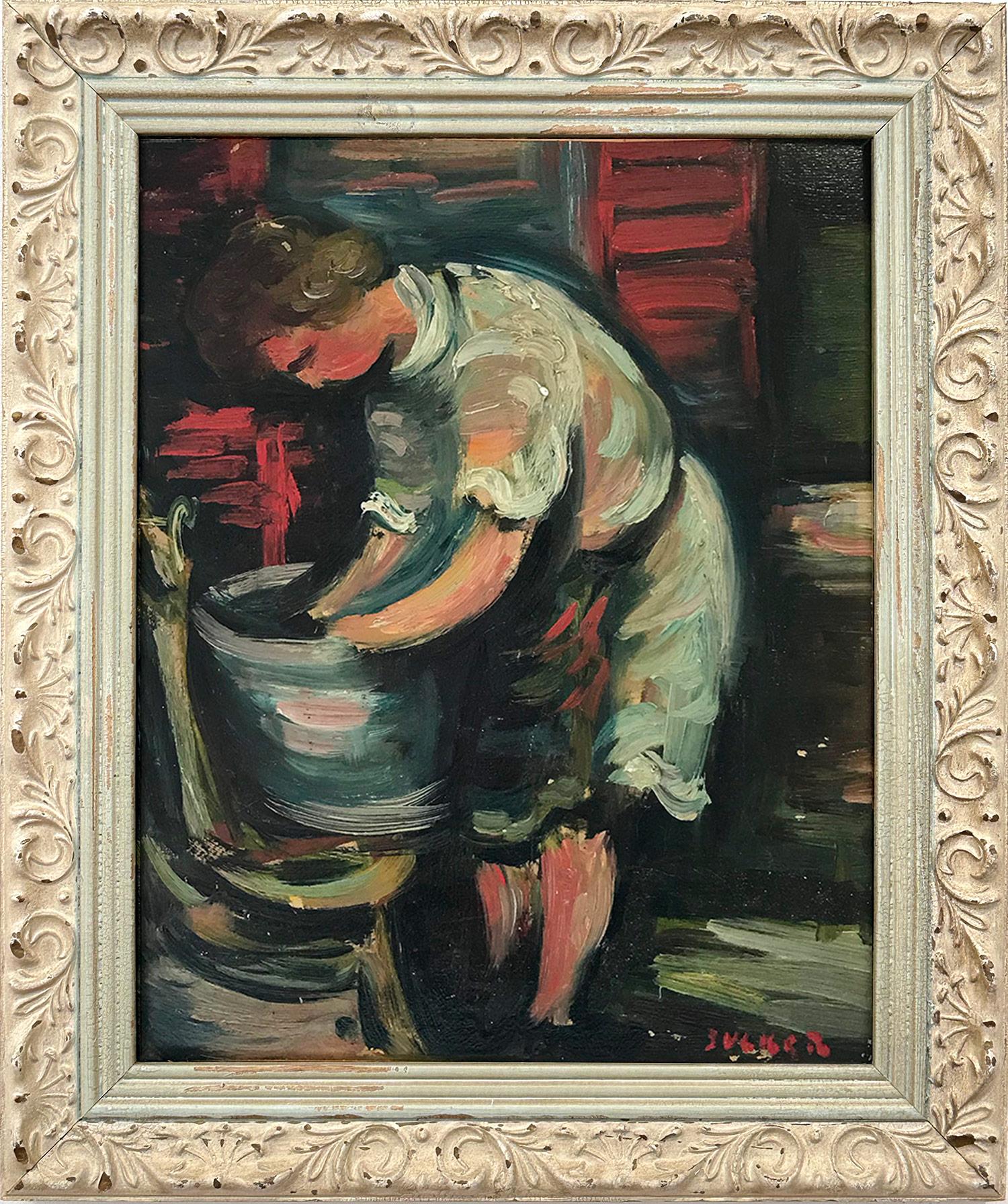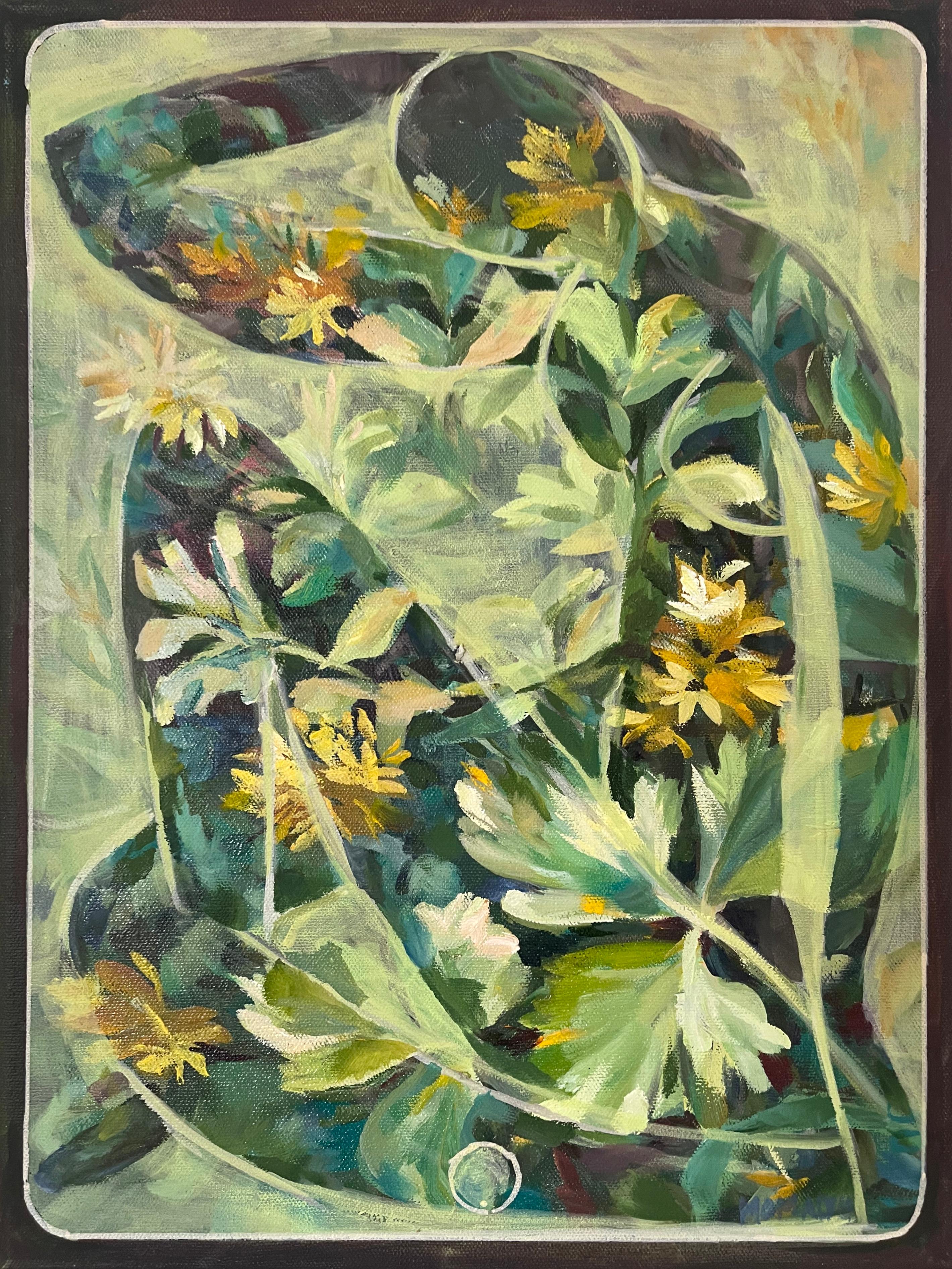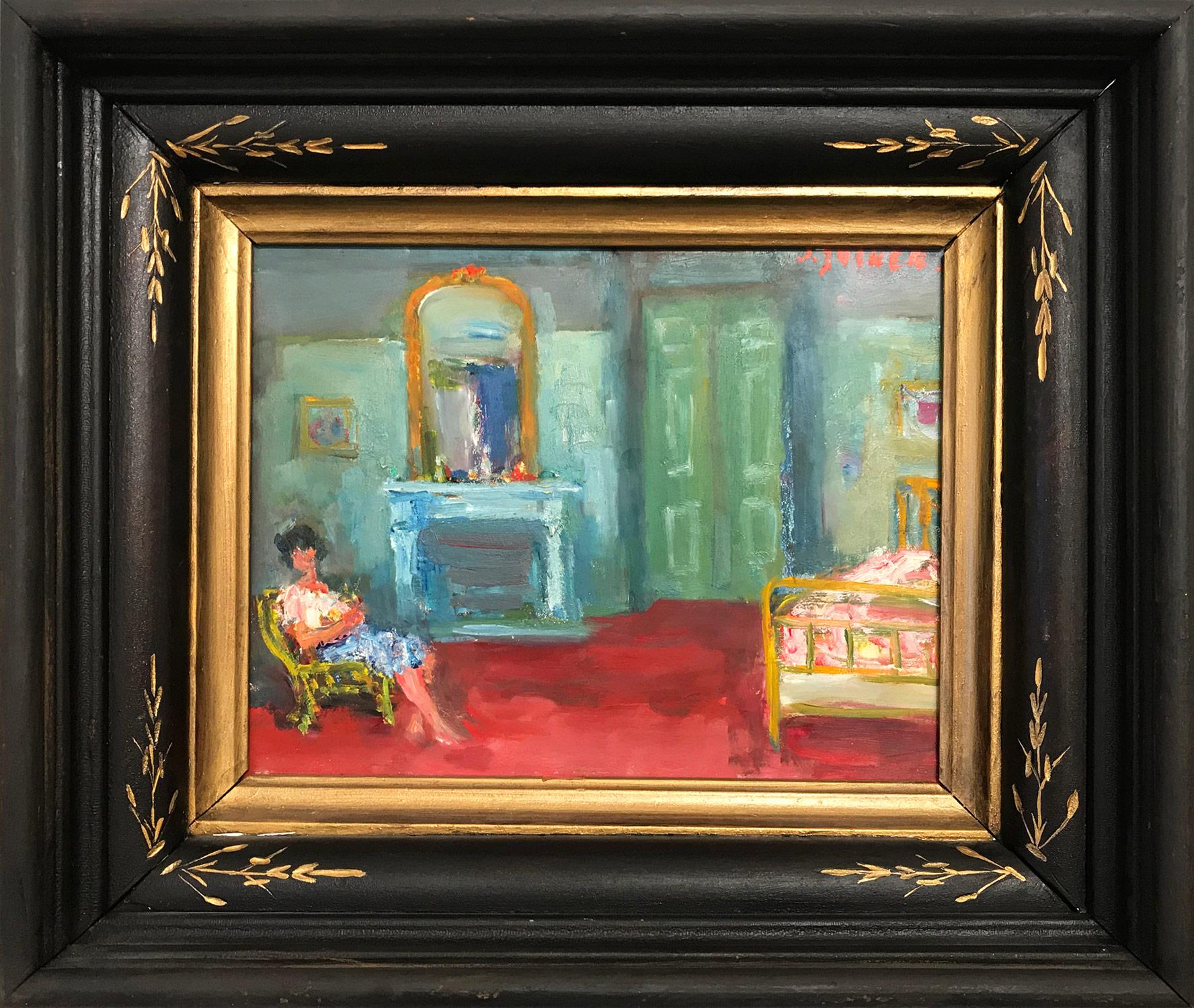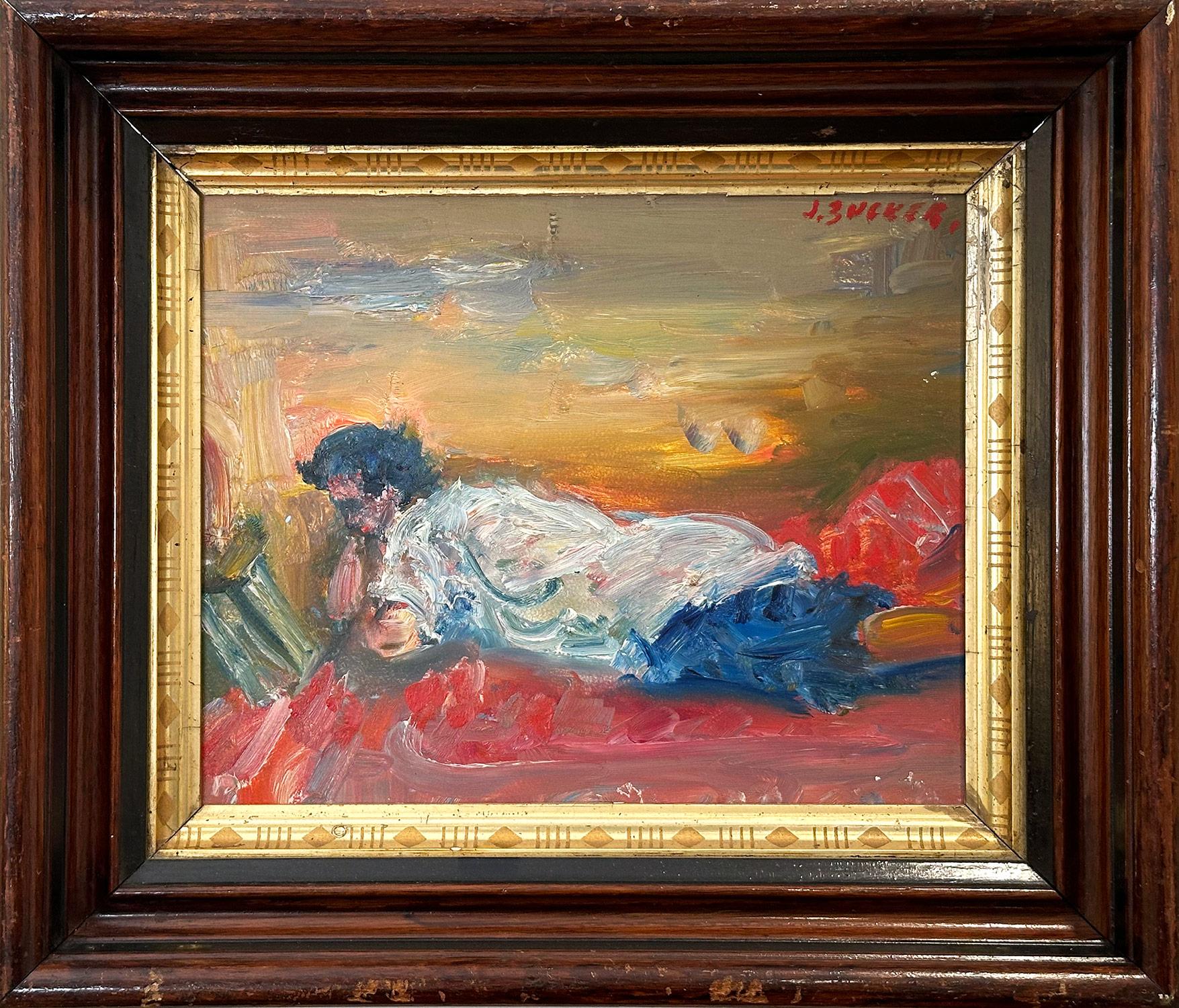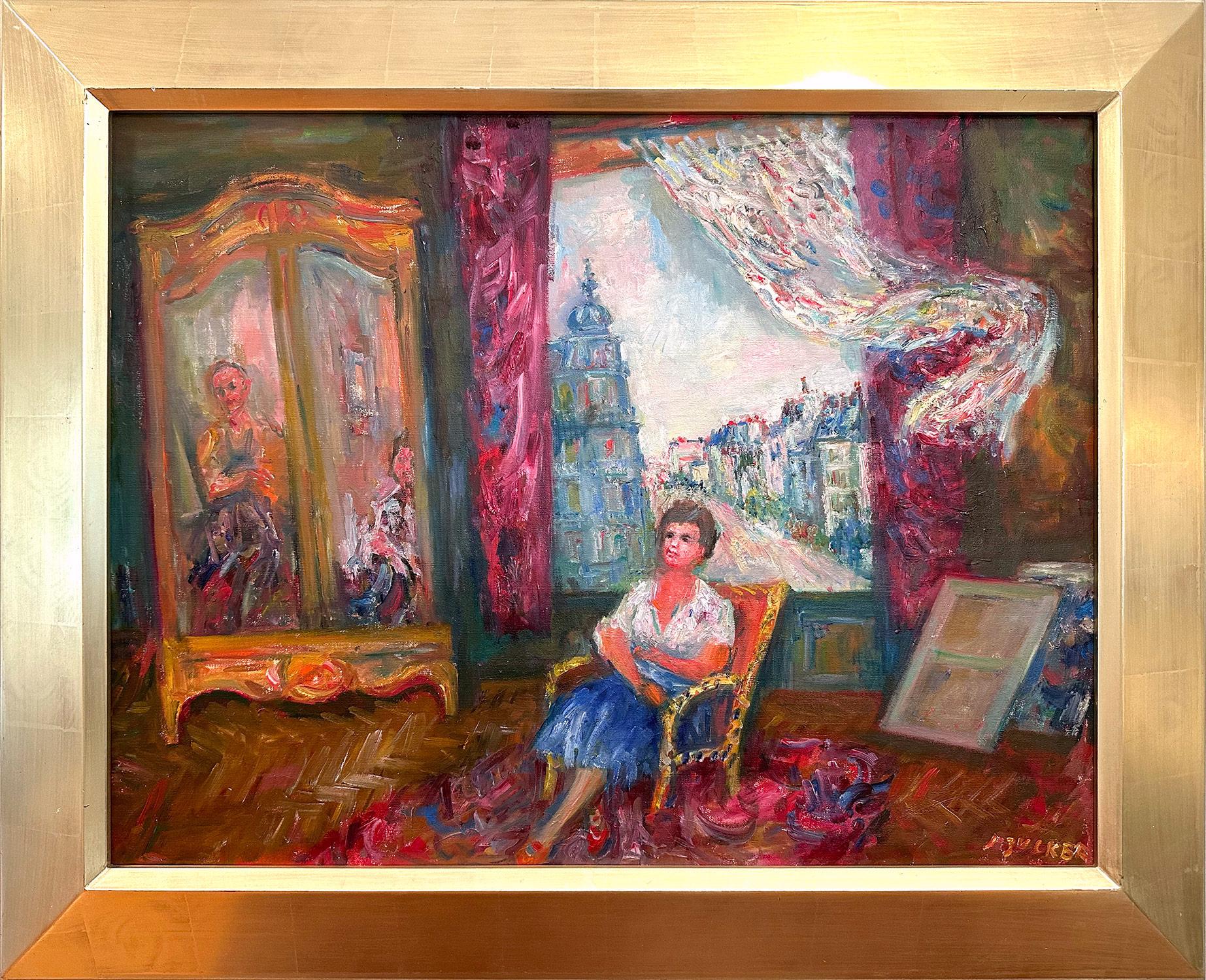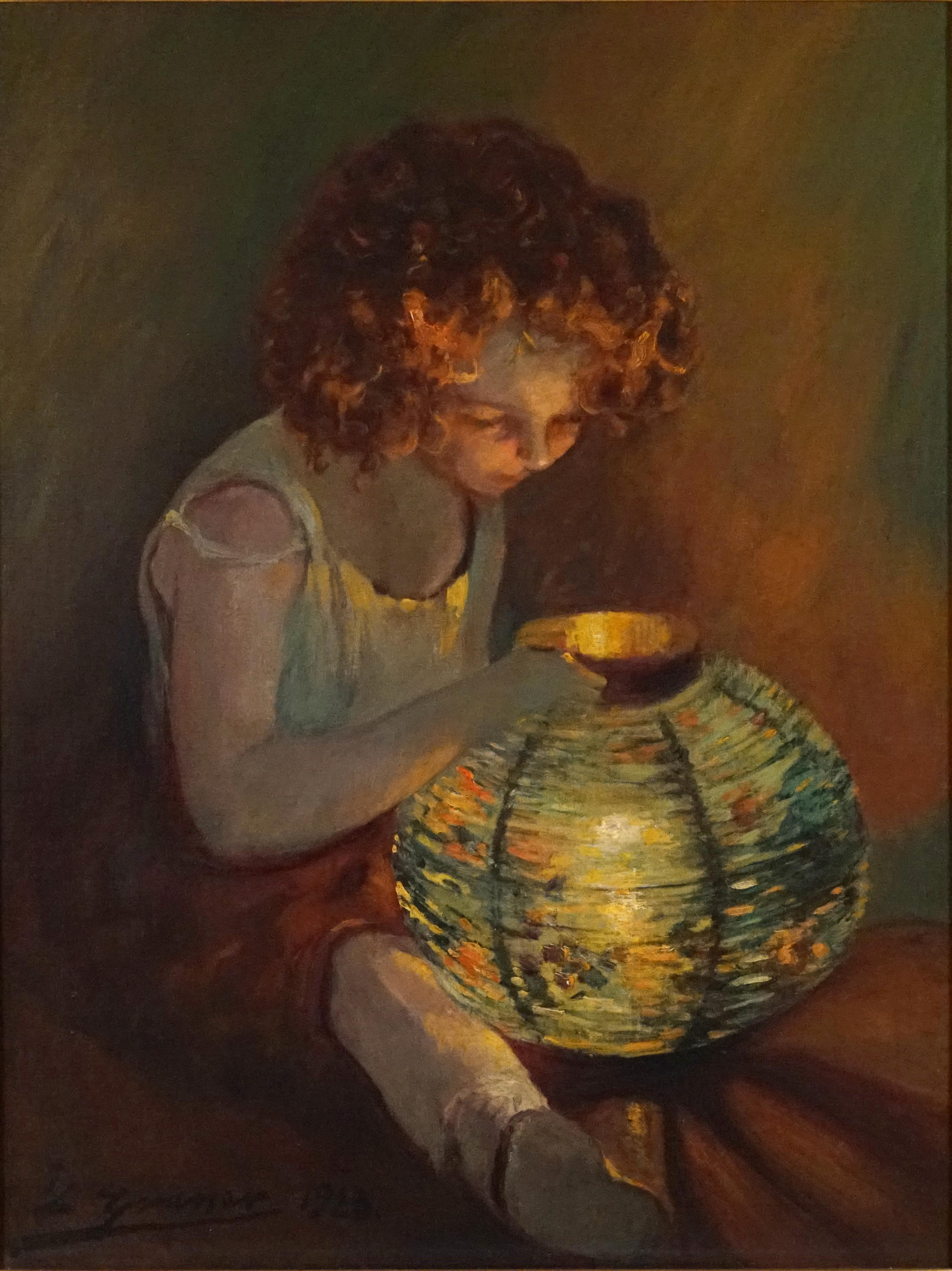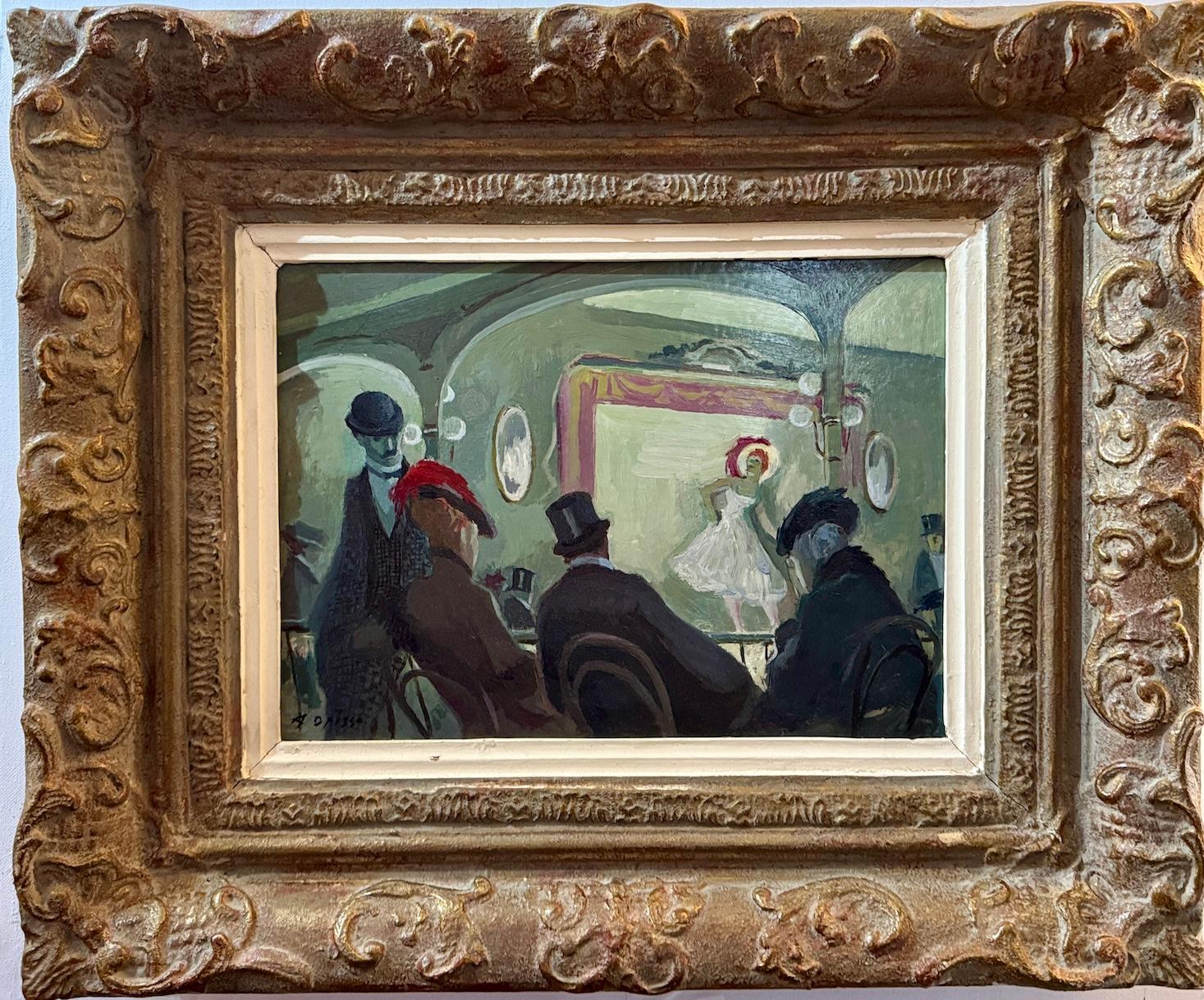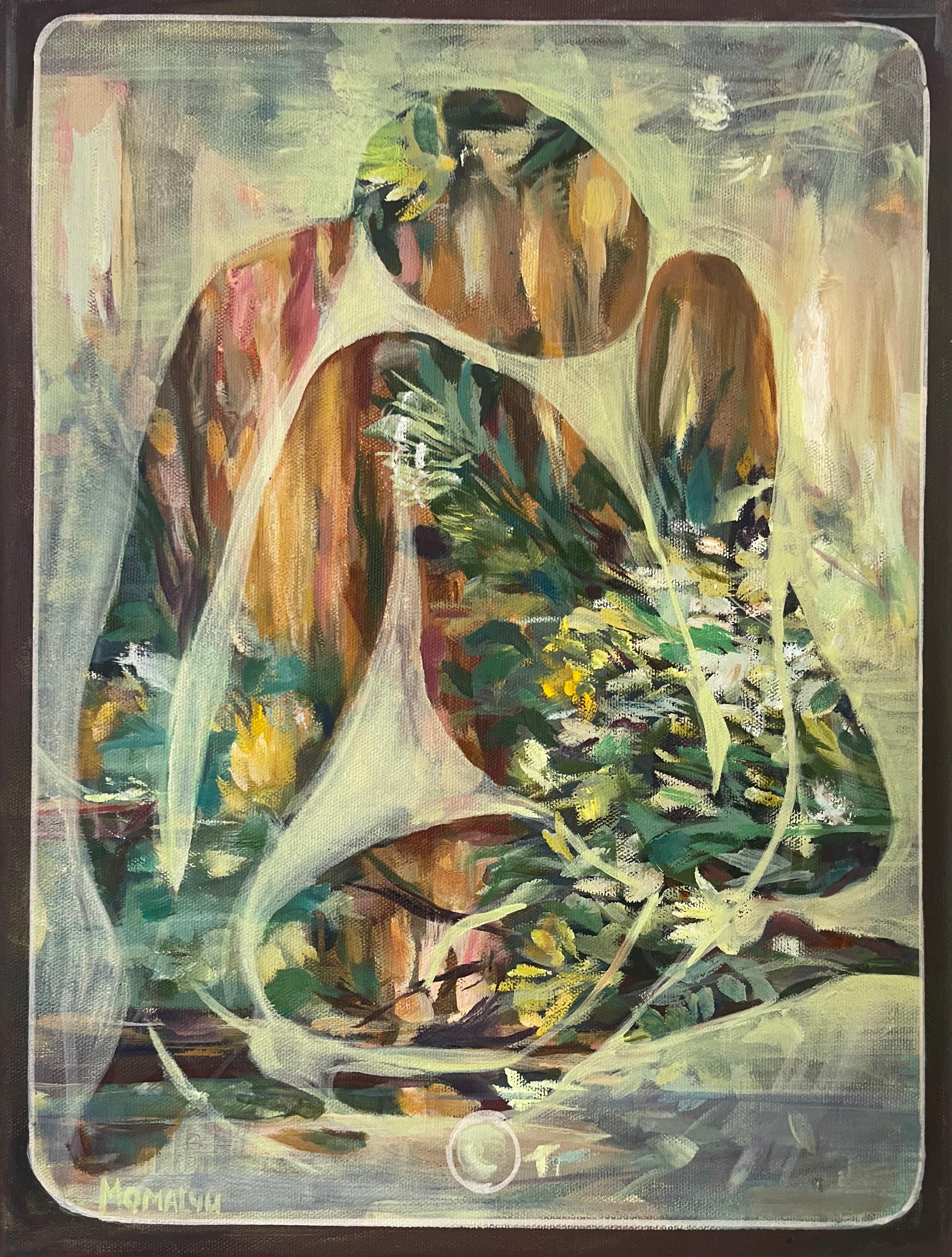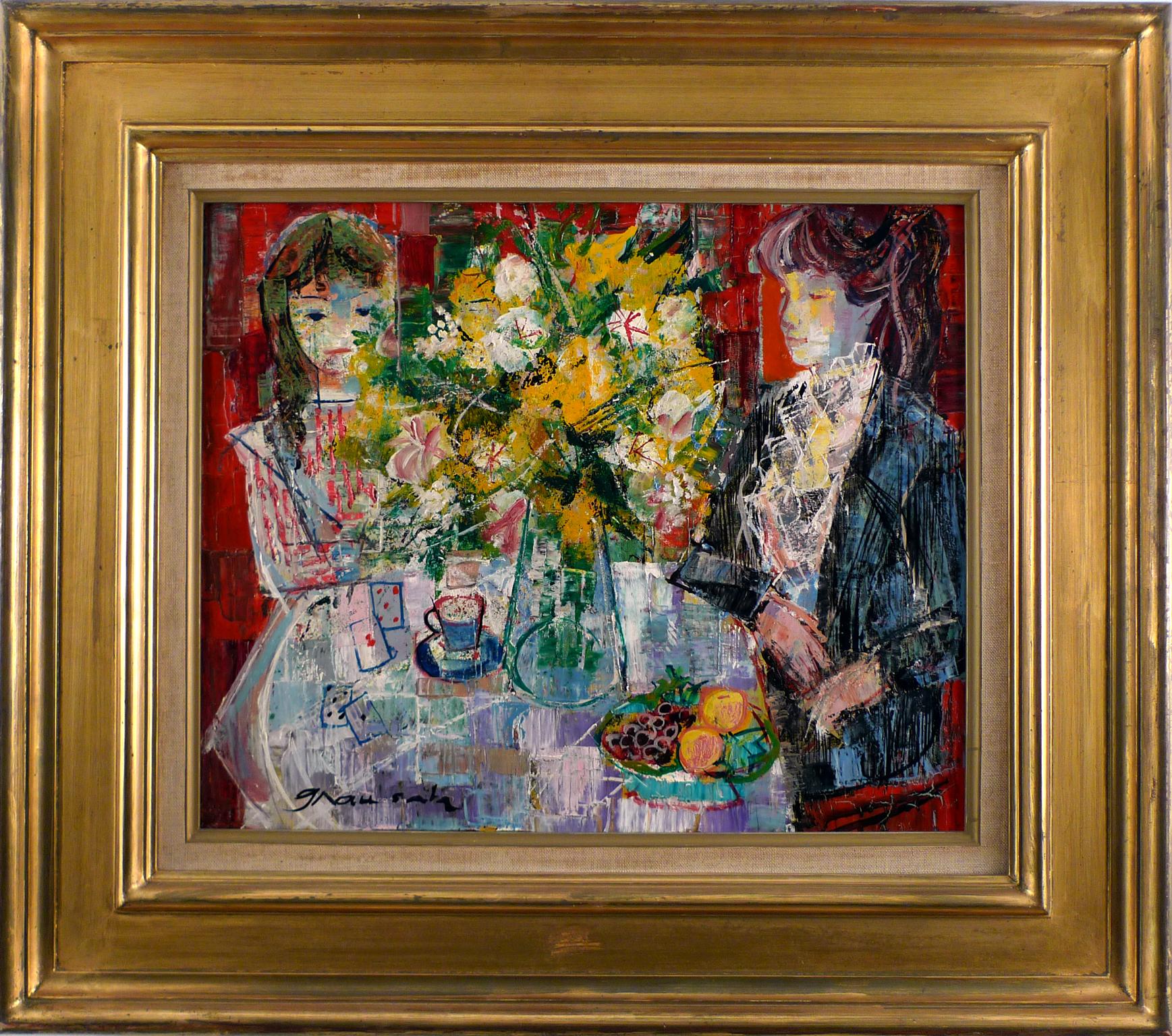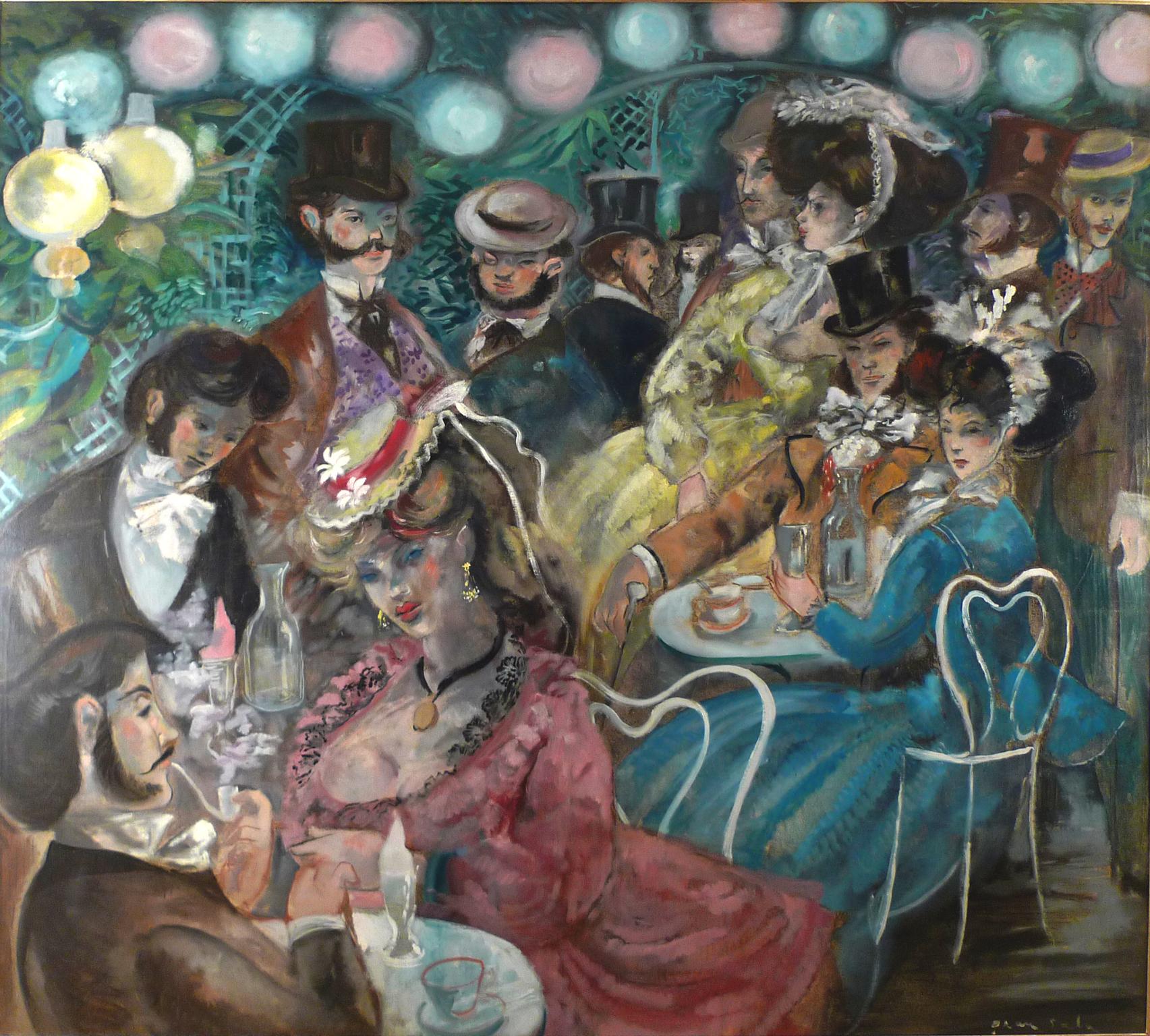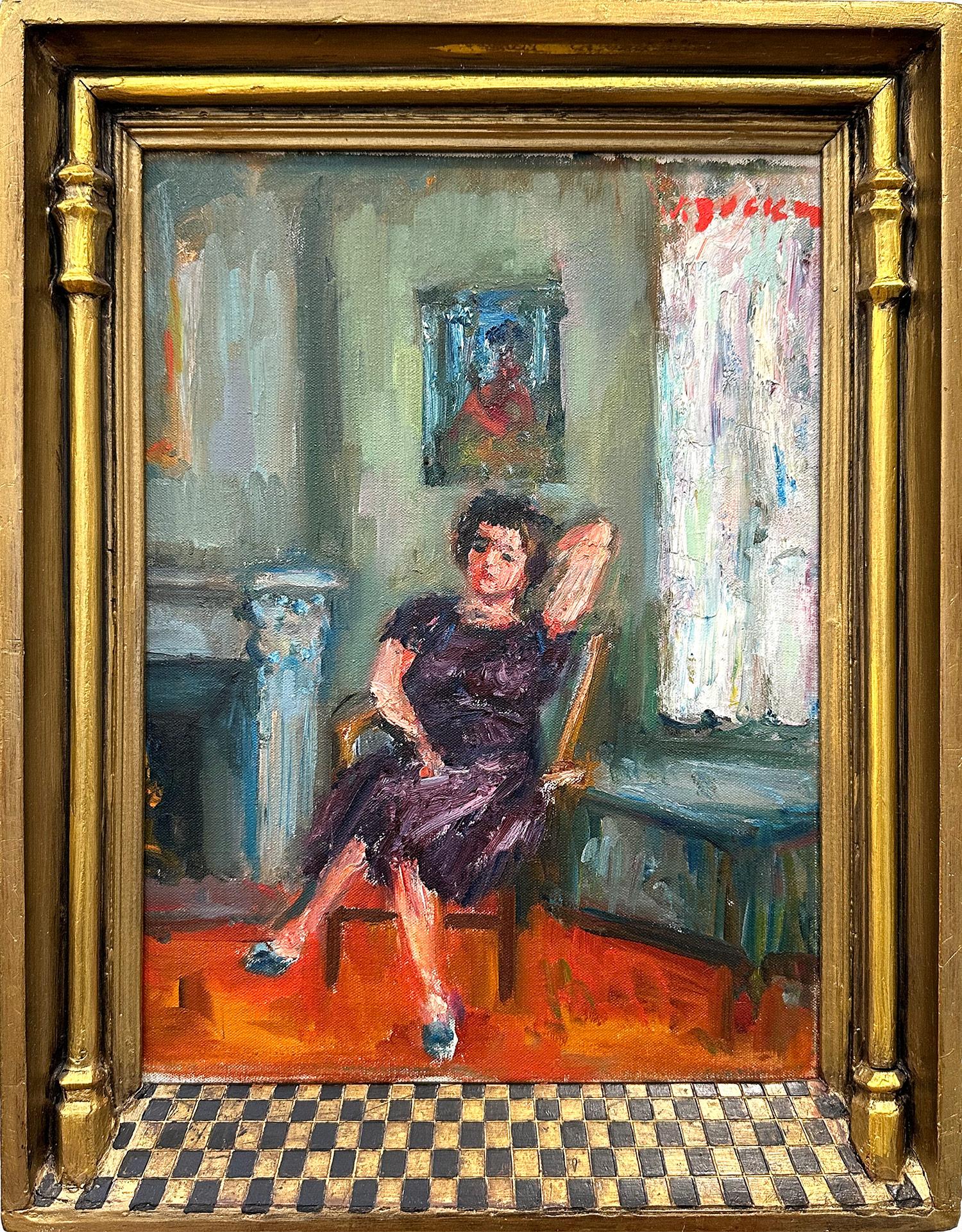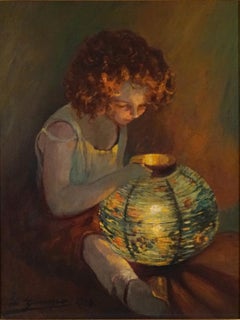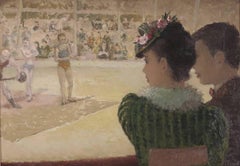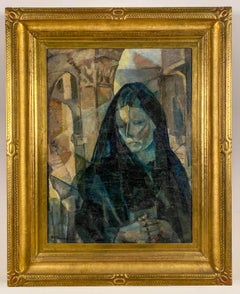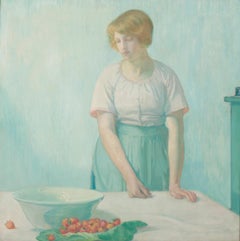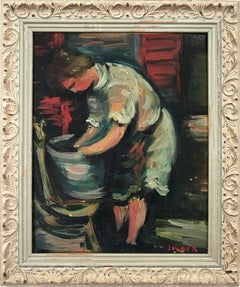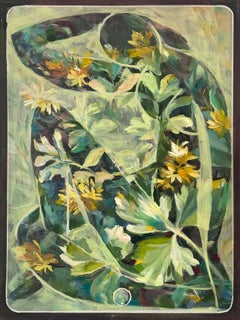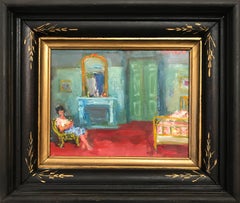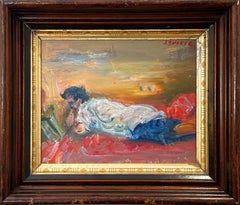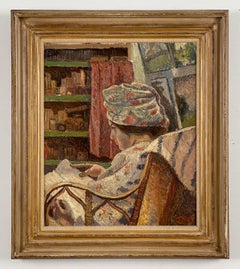
Girl Reading a Book
View Similar Items
Want more images or videos?
Request additional images or videos from the seller
1 of 8
Lucien PissarroGirl Reading a Book1907
1907
About the Item
- Creator:Lucien Pissarro (1863 - 1944, French)
- Creation Year:1907
- Dimensions:Height: 24.25 in (61.6 cm)Width: 21 in (53.34 cm)Depth: 2 in (5.08 cm)
- Medium:
- Movement & Style:
- Period:
- Condition:
- Gallery Location:Sheffield, MA
- Reference Number:Seller: Art P1001stDibs: LU70036132562
About the Seller
4.0
Vetted Professional Seller
Every seller passes strict standards for authenticity and reliability
1stDibs seller since 2017
52 sales on 1stDibs
Typical response time: 13 hours
Authenticity Guarantee
In the unlikely event there’s an issue with an item’s authenticity, contact us within 1 year for a full refund. DetailsMoney-Back Guarantee
If your item is not as described, is damaged in transit, or does not arrive, contact us within 7 days for a full refund. Details24-Hour Cancellation
You have a 24-hour grace period in which to reconsider your purchase, with no questions asked.Vetted Professional Sellers
Our world-class sellers must adhere to strict standards for service and quality, maintaining the integrity of our listings.Price-Match Guarantee
If you find that a seller listed the same item for a lower price elsewhere, we’ll match it.Trusted Global Delivery
Our best-in-class carrier network provides specialized shipping options worldwide, including custom delivery.More From This Seller
View AllThe Glow
Located in Sheffield, MA
LOUIS GRANER Y ARRUFI
(Spanish, 1863-1929)
The Glow 1923
oil on canvas
Signed & dated 23 lower left
In a Fine Giltwood Carved Frame
33 by 25 ½ in. W/frame ...
Category
1920s Post-Impressionist Interior Paintings
Materials
Oil
Au Circus
By Dietz Edzard
Located in Sheffield, MA
Dietz Edzard
German, 1893-1963
Au Circus
Oil on canvas
22 by 31 in. W/frame 32 by 41 in.
Signed lower right
Dietz Edzard was born in Bremen in 1893 Germany. He traveled extensive...
Category
1930s Post-Impressionist Figurative Paintings
Materials
Oil
Segovie
Located in Sheffield, MA
Marie Antoinette Boullard-Deve
French, 1890-1970
Segovie
Oil on canvas
29 by 21 ½ in. W/frame 39 by 31 ½ in.
Signed lower left and titled and dated 1951 on the back
Marie was born...
Category
1950s Modern Figurative Paintings
Materials
Oil
Woman with Strawberries
By Myron Barlow
Located in Sheffield, MA
Myron Barlow
American, 1873-1937
Woman with Strawberries
Oil on canvas
29 by 29 in. W/frame 35 by 35 in.
Unsigned
Studied: Art Institution of Chicago; Ecole des Beaux-Arts,
Gerome...
Category
Early 1900s American Impressionist Figurative Paintings
Materials
Oil
Le Gouter
By Gabriel Godard
Located in Sheffield, MA
Gabriel Godard
French, Born 1933
Le Gouter
Oil on canvas
36 by 29 in. W/frame 38 by 31 in.
Signed lower right & dated 62
Gabriel Godard was born on April 28, 1933 in Delouze in Lo...
Category
1960s Modern Interior Paintings
Materials
Oil
Woman and Child
By John Edward Costigan
Located in Sheffield, MA
John Edward Costigan, N.A.
American, 1888-1972
Woman and Child
Oil on canvas
Signed ‘J.E. Costigan N.A.’ lower left
24 by 30 in. W/frame 32 by 38 in.
John Costigan was born of Irish-American parents in Providence, Rhode Island, February 29, 1888. He was a cousin of the noted American showman, George M. Cohan, whose parents brought the young Costigan to New York City and was instrumental in starting him on a career in the visual arts. They were less successful in encouraging him to pursue formal studies at the Art Students League (where, however, he later taught) than in exposing him to the commercial art world through the job they had gotten him with the New York lithographing firm that made their theatrical posters.
At the H. C. Miner Lithographing Company, Costigan worked his way up from his entry job as a pressroom helper, through various apprenticeships, to the position of sketch artist. In the latter capacity he was an uncredited designer of posters for the Ziegfeld Follies and for numerous silent films. Meanwhile, he had supplemented his very meager formal studies in the fine arts with a self-teaching discipline that led to his first professional recognition in 1920 with the receipt of prizes for an oil painting and watercolor in separate New York exhibitions.
A year earlier, Costigan had wed professional model Ida Blessin, with whom he established residence and began raising a family in the sleepy little rural New York hamlet of Orangeburg, the setting for the many idyllic farm landscapes and wood interiors with which he was to become identified in a career that would span half a century.
John Costigan’s first national recognition came in 1922 with his winning of the coveted Peterson Purchase prize of the Art Institute of Chicago for an oil on canvas, “Sheep at the Brook.” It marked the start of an unbroken winning streak that would gain him at least one important prize per year for the remainder of the decade. The nation’s art journalists and critics began to take notice, making him the recurring subject of newspaper features and magazine articles. The eminent author and critic Edgar Holger Cahill was just a fledgling reporter when he wrote his first feature, “John Costigan Carries the Flame,” for Shadowland Magazine in 1922. Costigan had his first one-man show of paintings at the Rehn Gallery on New York’s 5th Avenue in November, 1924, to be followed less than three years later by another at the Art Institute of Chicago. In addition, Costigan’s work has been—and continues to be included, side-by-side with that of some of America’s most high-profile artists, in museum and gallery exhibitions throughout the country. His renown had peaked in the early 1930s, by which time his work had been honored with nearly every major award then being bestowed in the fine arts and had been acquired for the permanent collections of several prestigious American museums, including New York’s Metropolitan (which only recently, in 1997, deaccessioned his “Wood Interior,” acquired in 1934).
Although Costigan’s celebrity had ebbed by the late 1930s, the Smithsonian Institution saw fit in 1937 to host an exhibition exclusively of his etchings. And, in 1941, the Corcoran Gallery (also Washington, D.C.) similarly honored him for his watercolors. (Another Washington institution, the Library of Congress, today includes 22 Costigan etchings and lithographs in its permanent print collection.)
During World War II, Costigan returned briefly to illustrating, mainly for Bluebook, a men’s pulp adventure magazine. A gradual revival of interest in his more serious work began at the end of the war, culminating in 1968 with the mounting of a 50-year Costigan retrospective at the Paine Art Center and Arboretum in Oshkosh, Wisconsin. Oils, watercolors and prints were borrowed from museums and private collections throughout the country, and the exhibition was subsequently toured nationally by the Smithsonian Institution.
John Costigan died of pneumonia in Nyack, NY, August 5, 1972, just months after receiving his final prestigious award —the Benjamin West Clinedinst Medal of the Artist’s Fellowship, Inc., presented in general recognition of his “...achievement of exceptional artistic merit...” in the various media he had mastered in the course of his career.
This painting depicts one of the artist's favorite themes --the farm family bathing...
Category
1940s Post-Impressionist Landscape Paintings
Materials
Oil
You May Also Like
"Laundry" Post-Impressionism French Oil Painting Interior Scene Figure on Board
By Jacques Zucker
Located in New York, NY
This painting depicts a whimsical portrait of a young lady washing her laundry in front of a house. This piece was most likely executed in the 1930's, as the colors are darker than Z...
Category
1960s Post-Impressionist Figurative Paintings
Materials
Oil, Board
"What about stereotypes?" 2 in the triptych. Decorative social art
Located in Zofingen, AG
The second work of the triptych “What about stereotypes? ”
Female silhouette combined with flowers - a decorative subject - but with a deep concept, a series of paintings were prese...
Category
2010s Fauvist Figurative Paintings
Materials
Canvas, Oil
$575 Sale Price
20% Off
"Interior Scene with Figure and Mantel" Post-Impressionism Oil Painting on Panel
By Jacques Zucker
Located in New York, NY
A cozy little jewel, we are charmed by the rich choice of color and intimate details throughout this miniature work. This painting depicts a woman in her bedroom near the Mantel with...
Category
20th Century Post-Impressionist Interior Paintings
Materials
Oil, Panel
"Laying Figure Reading" Post-Impressionist Colorful Oil Painting on Panel Framed
By Jacques Zucker
Located in New York, NY
This painting depicts a whimsical scene of a figure reclining and reading. The figure is done in a quick way, where the scene almost is abstracted. The bright colors and quick brush ...
Category
20th Century Post-Impressionist Figurative Paintings
Materials
Oil, Panel
"Interior Scene of Woman in Paris" Post-Impressionism Oil Painting on Canvas
By Jacques Zucker
Located in New York, NY
This painting depicts an interior scene of a woman seated at an apartment in Paris with a window that overlooks the city and an iconic church with the artist's reflection in the armo...
Category
20th Century Post-Impressionist Interior Paintings
Materials
Canvas, Oil
20th century Spanish Cafe scene with dancing and drinking figures in a bar
By Alfredo Opisso
Located in Woodbury, CT
This captivating mid-century Spanish painting by Alfredo Opisso immerses the viewer in the lively atmosphere of a café or bar, where figures gather to drink, sing, and dance. Rendere...
Category
1960s Post-Impressionist Figurative Paintings
Materials
Oil, Board
